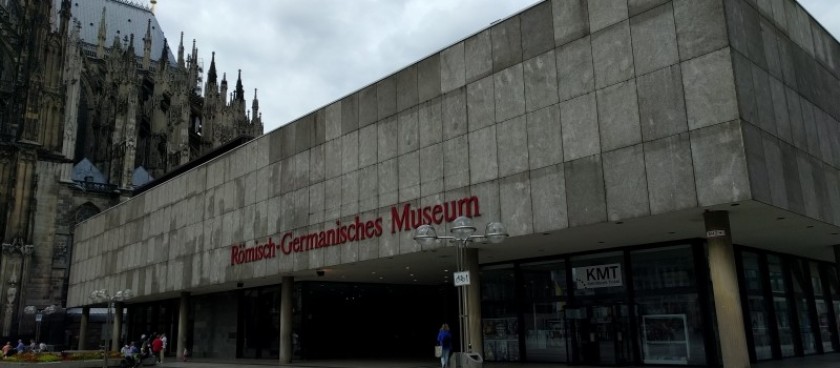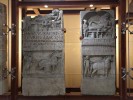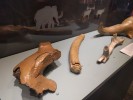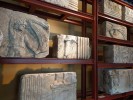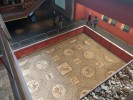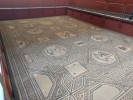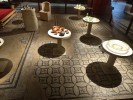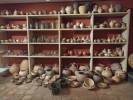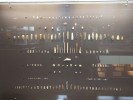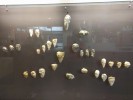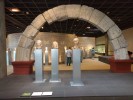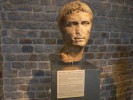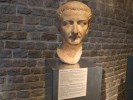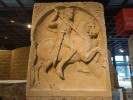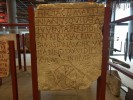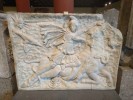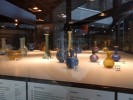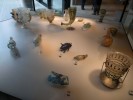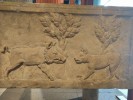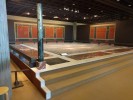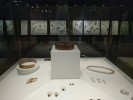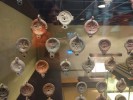- #DE42
- Obenmarspforten 21, 50667 Köln, Germany
- +492213998994
- museum@farina.org
- http://farina.org/impressum/
- Working hours*:
Tuesday - Friday: from 10.00 to 17.00
Every 1st Thursday of the month - until 22.00 - Prices*:
Adult 6.50 €
Reduced € 3.50 - * - opening and closing times as well as entrance prices, are subject to alterations without notice. Visitors are advised to check before visiting.
- 50.9376872, 6.9580606 Copy to clipboard Copy
-
#Museums
The Roman-Germanic Museum formed in October 1946 due to the merger of two museum collections in Cologne, the Roman collection of the Wallraf-Richartz Museum and the collection of the Museum of Prehistory and Early History. The museum located in the city of Cologne on the Roncalliplatz square near the famous Cologne Cathedral. The museum's modern building is called "showcases in the time of the Romans"—it built in March 1974 on a former Roman town villa site. In 1941, a bomb shelter began to built near the cathedral, and a perfectly preserved Roman mosaic known as the "Dionysus Mosaic" discovered. The history of the museum starts with this find.
The museum collection includes exhibits from the Paleolithic to the early Middle Ages and tells about hundreds of thousands of years of history of the Rhineland. The main exhibits date back to the Roman period, which lasted five hundred years, from the founding of Cologne during the reign of Emperor Octavian Augustus to the fall of the Western Roman Empire. Ancient artefacts and modern interactive panels tell about the transformation of Cologne from a small military settlement to the main city of the Roman province of Lower Germany.
The museum's collection is so rich that several exhibits in the primary group in another museum are displayed here behind glass, facing the street. These are tombstones with Latin inscriptions and sarcophagi; you can watch them for free. You can also look inside the museum through massive transparent showcases for free. Through the glass, it will be possible to examine in detail the mosaic of Dionysus and the enormous memorial to the Roman veteran. Shop windows always have a lot of people gazing at them. Thus, it is unnecessary to spend money to fulfil the plan, at least for the inspection.
Most of the museum's first floor occupied by a cash desk, a shop with books and souvenirs, a wardrobe and toilet rooms. From the exhibits, you can see fragments of mammoth bones, prehistoric stone tools and ceramics, a stand with cobblestones in which Roman tombstones are guessed—a little below the first-floor level, a vast fifteen-meter monument to the Roman veteran Lucius Publius.
On the lower "floor of Dionysus" is a famous mosaic dating back to the 3rd century. AD You cannot walk on the mosaic; it is located in a section below the floor level and surrounded by a knee-high fence. Also, on the ground floor, there are objects of Roman citizens' everyday life. Round tables with dishes, shoes, children's toys, medical instruments presented on the stands, a large rack packed to overflowing with clay pots and plates. In addition, there is an interactive stand under the stairs where you can select stories from the city's Roman history and broadcast them on the wall.
There is a rich collection on the top floor of the museum, starting with the settlement of Cologne in prehistoric times, artefacts from the Paleolithic, Bronze and Iron ages. There are stands with cunning primitive choppers, awls, stone arrowheads and axes. Remains of the Roman city wall, a stone arch of the northern gate with the initials of the city CCAA (Colonia Claudia Ara Agrippinensium), busts of Roman emperors, antique statues, a vast The Roman-Germanic Museum in Cologne is a must-see. After carefully examining his collection, opening a school history textbook or more serious historical literature, looking at the illustrations, you will undoubtedly notice to yourself that you have seen it with your own eyes.number of Roman tombstones with pagan and early Christian themes. On the top floor, there is a rich collection of Roman glass, ordinary and coloured glass vessels, crystal and the famous Cologne-Braunsfeld featurette with the inscription “Drink so that you always live well”.
The top floor of the museum is overflowing with treasures. Here are located Roman jewellery made of precious metals and stones, coins, clay lamps with different scenes, including erotic ones, religious objects, mosaics of philosophers, wall paintings, jewellery and weapons of barbarians of the era of the Great Migration of Nations, especially the Goth people, artefacts of the early Middle Ages, things of the Franks and Saxons.
How to get to the Romano-Germanic Museum
Subway Dom / Hauptbahnhof
